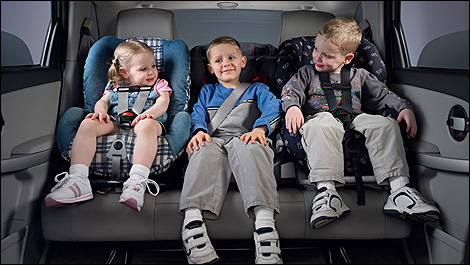Rear-Facing Car Seat Weight Limits: Ensuring Maximum Safety for Your Child
Rear-facing car seats are widely recognized as one of the safest options for infants and young toddlers during car journeys. These seats are designed to cradle and protect a child’s delicate head, neck, and spine, reducing the risk of severe injuries in the event of a collision. One crucial factor to consider when using a rear-facing car seat is the weight limit. In this article, we will delve into the significance of rear-facing car seat weight limits and provide guidance on ensuring maximum safety for your child.
Understanding Rear-Facing Car Seats
Rear-facing car seats are designed to face the rear of the vehicle, allowing the child to ride in a semi-reclined position. This orientation provides optimal support to the head and neck, which are particularly vulnerable in infants and young toddlers due to their underdeveloped musculature.
Research consistently shows that rear-facing car seats offer the best protection for children up to a certain age, weight, or height. The American Academy of Pediatrics (AAP) and other safety organizations recommend keeping children in a rear-facing car seat for as long as possible, ideally until they reach the maximum weight or height allowed by the manufacturer.
The Importance of Weight Limits
The weight limit of a rear-facing car seat is a critical factor in ensuring your child’s safety. Exceeding the weight limit can compromise the effectiveness of the seat’s protective features, potentially leading to severe injuries in case of a crash. Rear-facing car seat weight limits vary from model to model and can range from around 20 to 50 pounds (9 to 23 kilograms) or more.
It’s important to note that weight limits are set to account for the structural integrity of the car seat and its ability to withstand crash forces while providing adequate protection for the child. As your child grows and gains weight, you must transition to a forward-facing car seat or a convertible car seat that allows for extended rear-facing use.
Choosing the Right Car Seat
When selecting a rear-facing car seat for your child, consider the following steps to ensure you choose a seat with an appropriate weight limit:
- Check Manufacturer Guidelines: Read the car seat’s manual or specifications to determine the maximum weight limit for rear-facing use. This information is typically clearly stated by the manufacturer.
- Consider Convertible Car Seats: Convertible car seats offer the advantage of extended rear-facing use. They can accommodate higher weight limits, allowing your child to remain rear-facing for a longer period.
- Monitor Your Child’s Growth: Regularly weigh and measure your child to track their growth progress. When your child approaches the rear-facing weight limit of their current car seat, it’s time to start considering a transition to a larger seat.
- Follow the Recommendations: Adhere to the manufacturer’s recommendations and guidelines for proper car seat use, installation, and weight limits.
- Prioritize Safety: Safety should always be the primary concern. If your child reaches the weight limit of their rear-facing car seat, it’s imperative to transition them to a forward-facing seat or convertible car seat designed for their new stage of development.
In Conclusion
Rear-facing car seats provide crucial protection for infants and young toddlers, especially when it comes to their head, neck, and spine. Pay close attention to the weight limit of your child’s rear-facing car seat and transition to a forward-facing or convertible seat when your child approaches that limit. By adhering to manufacturer guidelines and prioritizing safety, you can ensure that your child travels securely and comfortably on every journey.






